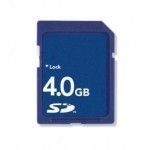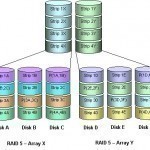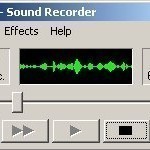A remote control is an electronic device that is used to operate a machine remotely i.e. it is used to issue commands to control the machine and these commands are issued from a distance. A universal remote is a remote control that can be easily programmed so as to operate the various brands of one or more devices. Programming a universal remote is a complex task and it is usually performed by technically-sound people and once a universal remote has been programmed successfully, it can be easily used just like Read More
SD Card

A SD Card (Secure Digital Card) is an IC (Integrated Circuit) which is stored in a compact and rugged plastic enclosure. SD Cards are designed to store data and to enable the transfer of data between devices equipped with SD Card slots. Current SD Card capacities range up to 1GB. A SD Card is 32mm long, 24mm wide, and 2.1mm thick. An even more compact format, the miniSD Card, is 20mm long, 21.5mm wide, and 1.4mm thick. The theoretical transfer speed of a SD 1.0 Card is 12.5MB/s. SD 1.1 Read More
Virtual Memory
Computer users place great demands on their computers and computing devices today more than ever before. The size and complexity of modern sophisticated computer applications the vast amounts of information that is being stored, shared, and utilized daily requires that large amounts of computer memory remain available so the computer can access and present data in an effective manner. Virtual memory is a rather ingenious method of harnessing the computer's actual memory capacity and manipulating it using a combination of the operating system and memory hardware capabilities. Data can be Read More
Serial ATA
Serial ATA is an enhancement to the ATA standard for for connecting storage to PC’s. All versions of ATA up until ATA-7 in 2004 utilized parallel transfer of data from the motherboard to the drive controller built onto the disk. The ATA-7 specification introduced Serial ATA. Serial ATA Standards The original Serial ATA standard offered miniminal improvement over the existing 133MBps bandwidth of the existing Parallel ATA standard. Serial ATA standards are constantly evolving to meet higher bandwidth requirements. Serial ATA Type Bandwith Bus Speed Signal Rate SATA-150 150MBps 1500MHz Read More
High Definition Audio
High Definition Audio, also known as HD Audio, is an audio standard created by Intel to be used on their chipsets, i.e. it is a standard for high-quality on-board audio. HD Audio was designed to replace the Audio Codec 97 (AC'97) standard that Intel released in 1997. The main achievement of the AC'97 specification was the audio quality improvement in popular sound cards by complete separation of analog and digital sections, and the raise in maximum playback sample frequency up to 48 kHz for compatibility with the audio format in Read More
RAID (Redundant Array of Independent Disks)

RAID stands for Redundant Array of Independent Disks and it basically involves combining two or more drives together to improve the performance and the fault tolerance. Combining two or more drives together also offers improved reliability and larger data volume sizes. RAID distributes the data across several disks but the operating system considers this array a single disk. RAID Levels RAID 0 RAID 0 uses data stripping as the data is broken into fragments while writing it to the drive. The fragments are then written to their disks simultaneously in Read More
How to Fix a Laptop
Laptop Malfunctions A common problem with laptop computers is that they are prone to malfunctions. This is because laptops still use a relatively new type of technology and consist of many different pieces that are very close to each other in a small amount of space. Laptops must include everything that a desktop computer would, such as a fan, hard drive, and motherboard, but in a much smaller area. Because of this, parts often overheat, damage each other, or break off. Furthermore, users are more likely to drop a laptop Read More
iSCSI
iSCSI stands for Internet SCSI, or Internet Small Computer Systems Interface. iSCSI is the transmission of SCSI commands and data over IP networks, and represents a networking standard for IP-based network data storage. The development of the IETF standard was considered to be the key enabler for expanded usage of storage area networks (SANs) throughout the marketplace. iSCSI technology can be deployed on local or wide area networks through the use of the Internet across distributed resources. How iSCSI Works When an application attempts to read from an iSCSI device, the Read More
Green Computing
Green computing is the term used to denote efficient use of resources in computing. This term generally relates to the use of computing resources in conjunction with minimizing environmental impact, maximizing economic viability and ensuring social duties. Green computing is very much related to other similar movements like reducing the use of environmentally hazardous materials like CFCs, promoting the use of recyclable materials, minimizing use of non-biodegradable components, and encouraging use of sustainable resources. One of the spin-offs of green computing is EPEAT or Electronic Products Environmental Assessment Tool. EPEAT Read More
How to Use Windows Sound Recorder

To start Windows Sound Recorder Click the <Start> button Click <All Programs> Click <Accessories> Click <Entertainment> Click <Windows Sound Recorder> Recording a Sound with Windows Sound Recorder To record a sound with Windows Sound Recorder, just press the <Record> button in the lower right corner of the window with a circle icon on it. Playing a Sound with Windows Sound Recorder You can use the <Play> button to play a sound you have just recorded, or you can use <File> and <Open> to play a file stored on your hard Read More


Share on: